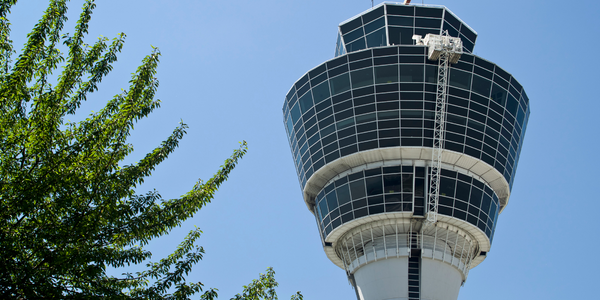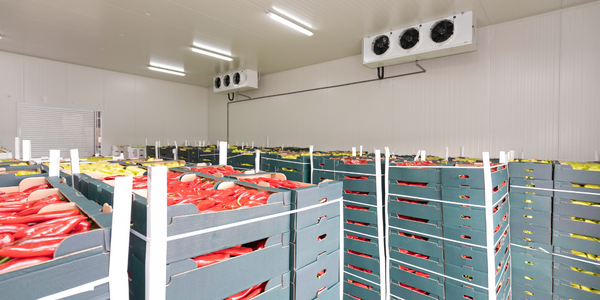Technology Category
- Analytics & Modeling - Digital Twin / Simulation
- Networks & Connectivity - RFID
Applicable Industries
- Packaging
- Transportation
Applicable Functions
- Logistics & Transportation
- Product Research & Development
Use Cases
- Intelligent Packaging
- Manufacturing Process Simulation
Services
- System Integration
- Testing & Certification
About The Customer
The Tokyo National Museum (TNM) is the oldest and largest museum in Japan. Founded in 1872, it preserves a range of archaeological objects and artworks from Japan and the surrounding Asian regions. The museum holds over 113,000 assets consisting of multiple pieces; assets include paintings, calligraphy, sculptures, architecture, metalwork, ceramics, and swords, among others. These artifacts often need to be transported between locations, such as the TNM and temples. The museum places great importance on evaluating its shipping process and packaging systems to ensure the safety and preservation of these priceless and irreplaceable items.
The Challenge
The Tokyo National Museum (TNM), founded in 1872, holds over 113,000 cultural assets including paintings, sculptures, ceramics, and more. These priceless artifacts often need to be transported between locations, making their packaging and transportation a serious business. The TNM discovered an unexpected and unacceptable vibration loading to these precious artifacts during transportation. The museum had little control over the vehicle dynamics of the shipping trucks, making it clear that the packaging system design needed to be re-evaluated. The TNM had been using coil spring type “vibration isolators” for shipments of cultural assets. These isolators were positioned at the bottom of a shipping box, which contained the art objects. However, the results from both a random lab test and a trial truck shipment indicated a resonance frequency between 10 Hz to 20 Hz, which was within the truck’s frequency range of excitation (10 Hz to 20 Hz), leading to potential damage to the artifacts.
The Solution
The TNM collaborated with Altair® and consulting firm eXcearch LLC to pinpoint the root cause of the undesired vibration. The team mapped out a simulation-driven investigative approach incorporating both computer-aided engineering (CAE) and physical testing. They created a dummy packaging box with four isolators placed at 0-degree and 45-degree angles and tested two weights, 176 kg and 88 kg. The team mounted tri-axial accelerometers on the bottom of the dummy box and used a “shaker table” in the lab to measure the response of the system for controlled frequency excitations. Based on their physical tests, the team discovered that resonance frequency shifts to a lower range as the input acceleration increases. The team then moved into simulation mode using the results of the physical test. They applied MBD technology commercially developed by Altair. Using MotionSolve® software for mechanical systems simulation, MotionView® for model assembly and HyperView® /HyperGraph® for results visualization, they created a virtual model of the dummy box.
Operational Impact

Case Study missing?
Start adding your own!
Register with your work email and create a new case study profile for your business.
Related Case Studies.

Case Study
Airport SCADA Systems Improve Service Levels
Modern airports are one of the busiest environments on Earth and rely on process automation equipment to ensure service operators achieve their KPIs. Increasingly airport SCADA systems are being used to control all aspects of the operation and associated facilities. This is because unplanned system downtime can cost dearly, both in terms of reduced revenues and the associated loss of customer satisfaction due to inevitable travel inconvenience and disruption.

Case Study
IoT-based Fleet Intelligence Innovation
Speed to market is precious for DRVR, a rapidly growing start-up company. With a business model dependent on reliable mobile data, managers were spending their lives trying to negotiate data roaming deals with mobile network operators in different countries. And, even then, service quality was a constant concern.

Case Study
Digitize Railway with Deutsche Bahn
To reduce maintenance costs and delay-causing failures for Deutsche Bahn. They need manual measurements by a position measurement system based on custom-made MEMS sensor clusters, which allow autonomous and continuous monitoring with wireless data transmission and long battery. They were looking for data pre-processing solution in the sensor and machine learning algorithms in the cloud so as to detect critical wear.

Case Study
Cold Chain Transportation and Refrigerated Fleet Management System
1) Create a digital connected transportation solution to retrofit cold chain trailers with real-time tracking and controls. 2) Prevent multi-million dollar losses due to theft or spoilage. 3) Deliver a digital chain-of-custody solution for door to door load monitoring and security. 4) Provide a trusted multi-fleet solution in a single application with granular data and access controls.

Case Study
Vehicle Fleet Analytics
Organizations frequently implement a maintenance strategy for their fleets of vehicles using a combination of time and usage based maintenance schedules. While effective as a whole, time and usage based schedules do not take into account driving patterns, environmental factors, and sensors currently deployed within the vehicle measuring crank voltage, ignition voltage, and acceleration, all of which have a significant influence on the overall health of the vehicle.In a typical fleet, a large percentage of road calls are related to electrical failure, with battery failure being a common cause. Battery failures result in unmet service agreement levels and costly re-adjustment of scheduled to provide replacement vehicles. To reduce the impact of unplanned maintenance, the transportation logistics company was interested in a trial of C3 Vehicle Fleet Analytics.

Case Study
3M Gains Real-Time Insight with Cloud Solution
The company has a long track record of innovative technology solutions. For example, 3M helps its customers optimize parking operations by automating fee collection and other processes. To improve support for this rapidly expanding segment, 3M needed to automate its own data collection and reporting. The company had recently purchased the assets of parking, tolling, and automatic license plate reader businesses, and required better insight into these acquisitions. Chad Reed, Global Business Manager for 3M Parking Systems, says, “With thousands of installations across the world, we couldn’t keep track of our software and hardware deployments, which made it difficult to understand our market penetration.” 3M wanted a tracking application that sales staff could use to get real-time information about the type and location of 3M products in parking lots and garages. So that it could be used on-site with potential customers, the solution would have to provide access to data anytime, anywhere, and from an array of mobile devices. Jason Fox, Mobile Application Architect at 3M, upped the ante by volunteering to deliver the new app in one weekend. For Fox and his team, these requirements meant turning to the cloud instead of an on-premises datacenter. “My first thought was to go directly to the cloud because we needed to provide access not only to our salespeople, but to resellers who didn’t have access to our internal network,” says Fox. “The cloud just seemed like a logical choice.”



